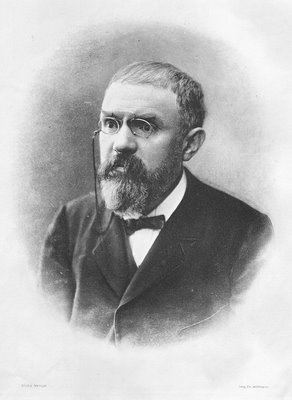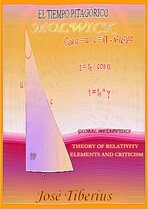2.b.3. The Lorentz transformations
Concept of relative motion
Galileo’s principle of relativity states that any mechanical experiment carried out in a system at rest will progress the same as in a system moving at a velocity “u” concerning the former, or in a uniform rectilinear (or linear) motion (URM).
Let us note that relative motion and motion is the same concept, as Galileo’s relativity principle states all motion requires a reference frame. Therefore, for this specific topic, the expressions uniform relative motion, and uniform rectilinear motion will be equivalent. Nonetheless, URM serves for both!
When Galileo established that the Earth rotates around the Sun, this principle logically meant the need to re-establish validity of science regarding experiments on Earth as if it was at rest. Same as before!
From Galileo’s principle of relativity, we can deduce some equations of the transformation of a relative motion from one frame of reference to another (F and F’). These equations will change the origin of the reference system according to the relative displacement between the two reference frames.
If we adjust this displacement on the x-axis, the Galileo equations or transformations would be those of following image.
Lorentz equations or transformations consist of –same as the Galileo ones– establishing a mechanism of transformation of values between frames of reference (F and F’) with a relative motion with speed u. However, the maximum speed c is equal for these frames of reference. In other words, maximum speed c will not be additive when the origin of the reference frame changes.
x' = x - u t
y' = y
z' = z
t' = tWe are not going into mathematical games with Lorentz equations to keep this simple; however, it is useful to mention that these equations imply a bi-univocal asymptotic transformation between variables space and time, maintaining the condition of maximum velocity. The only problem for relative motion with Lorentz transformations is the creation of an indeterminate point –of a purely mathematical nature– when u = c, which in Einstein’s relativistic physics is called a singularity.
The derivation of Lorentz equations from Pythagoras’s theorem is in the pages of this book about Space-time and Pythagoras’s theorem itself.
The following auxiliary constants shorten Lorentz equations:
ß = u / c
γ = (1 - ß ²)-½Therefore, Lorentz transformations are as follows.
Now, t’ is different from t; that is to say, conventional time does not coincide with the time measured from another frame of reference, once the corresponding Lorentz transformations are applied.
x' = γ (x - u t)
y' = y
z' = z
t' = γ (t - x ß/c)Lorentz showed that the formulae for electromagnetism are equal for all frames of reference in relative motion, but only when using these transformations –put forward in 1892.
These transformations reduced to Galileo’s when relative velocity u or the relative motion of S’ with respect to S is very small compared to maximum velocity c.
There are also equations to transform velocities or relativistic formulae for the addition of velocities, which we will state for the sole purpose of stressing their complexity.
v'x = (vx - u ) / (1 - vx u /c²)
v'y = vy / γ (1 - vx u /c²)
v'z = vz /γ (1 - vx u /c²)We must remember that relative motion refers only along the x-axis in this case and that both ß and γ are the auxiliary constants mentioned previously.
Critical analysis of Lorentz transformations
It is important to remember that until Einstein discovered the supposed true meaning of Lorentz equations, these were purely a mathematical game. Subsequently, Einstein’s theories themselves went on to be a mathematical curiosity, until an eclipse started the darkness time.
Lorentz equations do not prove anything by themselves; they are mathematical formulae representing the error in the interpretation of the Michelson-Morley experiment by Modern Physics concerning light relative motion.
All they do is to alter the units of magnitude t artificially because reality cannot change with abstract reasoning.
Of course, when time unit changes, velocity changes, and so is momentum, angular velocity, energy, and other magnitudes. Consequently, the different units of the International System of Units change continuously.
One object or particle may have different times when compared to a ray of light, which moves in its line according to the direction of this ray.
Time, on occasions, depends on velocities that are neither real nor physical, but mental, such as the velocity of separation of two objects. Let us note here that, in Global Physics, the Global Aether is also supporting medium for kinetic mass –equivalent mass to kinetic energy.
Making an asymptotic transformation of variables produces a considerable loss of intuitive vision of the physical reality, and it overly stimulates speculative fantasy as it delves into imaginary solutions.
Another price to pay for Lorentz transformations is the impossibility to establish correlations when a particle reaches the speed of light, as asymptotic transformation at this point does not allow inverse ones because of the inherent indeterminacy or relativistic singularity. We are mainly referring to the proper time of light.

2.b.4. The Poincare postulates
Michelson-Morley experiment showed no movement of expected fringes with the interference pattern, and therefore they suggested a new physical principle, the speed of light in free space is the same everywhere, independently of the movement of the source and the observer. The interpretation paved the way for the new theories of relativity.
Proof of this is that in 1904, Henri Poincare stated the following two postulates:
The principle of Relativity – Physical laws are the same for all frames of reference. Preferred frames of reference do not exist.
The principle of constancy of the speed of light – In a vacuum, the speed of light has the same value c for all frames of reference.
It is much like Einstein's relativity. Here are two little problems.
Racing photons
If the reference system is the Solar system, light on the surface of the Earth and Mars will take different speeds, not justified by the medium in which it moves.
General Relativity has no solution, and therefore only provides local solutions.
Local Solution of General Relativity by gravity field
If the problem for a general solution is gravity field acting like a privileged reference frame, the solution could come making gravity field the LUM Aether (Luminiferous, universal, and mobile), as proposed by Global Physics.
